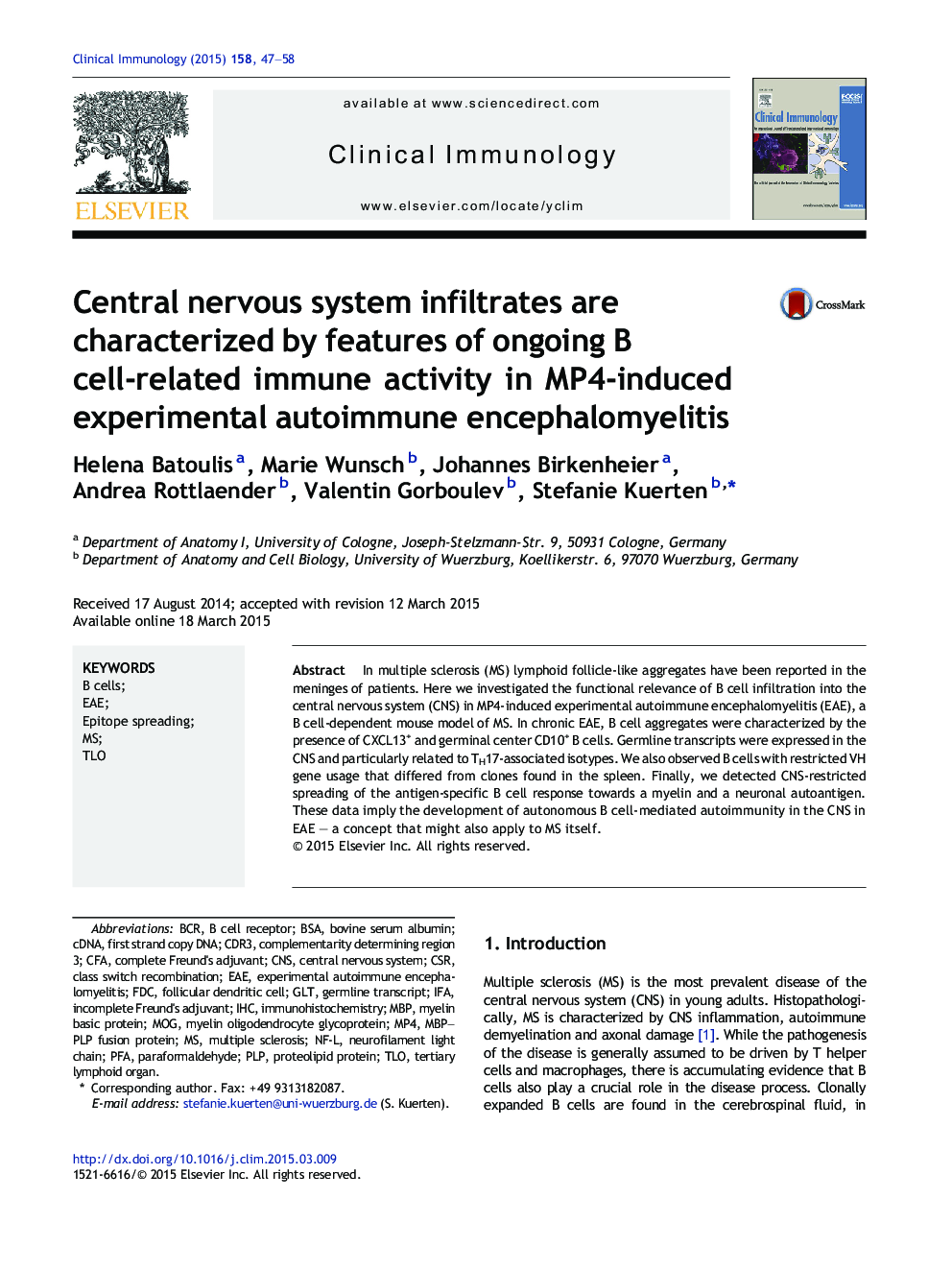| Article ID | Journal | Published Year | Pages | File Type |
|---|---|---|---|---|
| 6087289 | Clinical Immunology | 2015 | 12 Pages |
â¢MP4-induced EAE is characterized by B cell infiltration into the CNS.â¢CNS infiltrating B cells show isotype switching associated with TH17 immunity.â¢CNS infiltrating B cells show signs of somatic hypermutation.â¢Epitope spreading of the CNS-reactive B cell response is a feature of the MP4 model.
In multiple sclerosis (MS) lymphoid follicle-like aggregates have been reported in the meninges of patients. Here we investigated the functional relevance of B cell infiltration into the central nervous system (CNS) in MP4-induced experimental autoimmune encephalomyelitis (EAE), a B cell-dependent mouse model of MS. In chronic EAE, B cell aggregates were characterized by the presence of CXCL13+ and germinal center CD10+ B cells. Germline transcripts were expressed in the CNS and particularly related to TH17-associated isotypes. We also observed B cells with restricted VH gene usage that differed from clones found in the spleen. Finally, we detected CNS-restricted spreading of the antigen-specific B cell response towards a myelin and a neuronal autoantigen. These data imply the development of autonomous B cell-mediated autoimmunity in the CNS in EAE - a concept that might also apply to MS itself.
Graphical abstractDownload high-res image (128KB)Download full-size image
